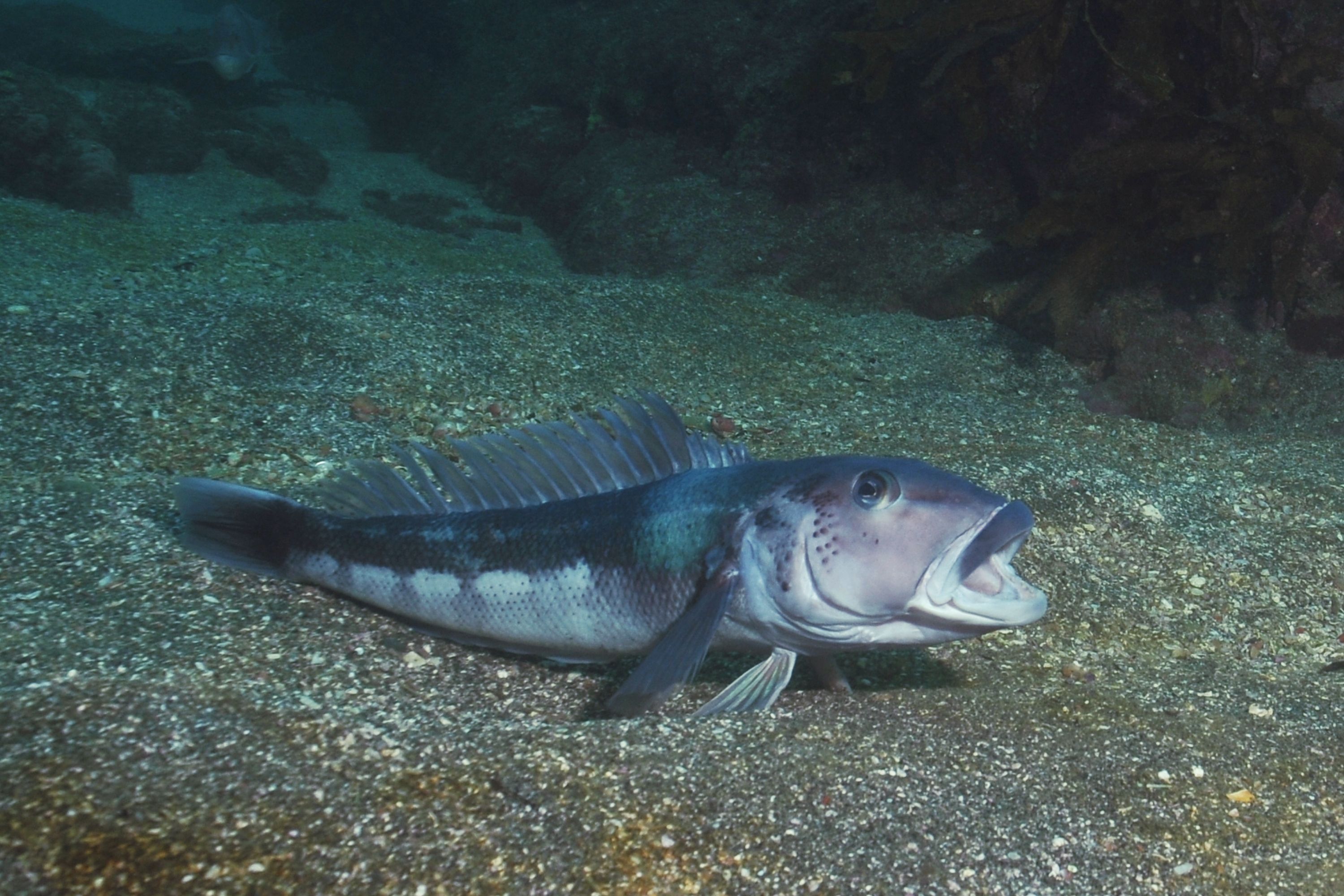Blue cod
(Parapercis colias)

Description
The New Zealand blue cod (Parapercis colias) is a temperate marine fish of the family Pinguipedidae. It is also known variously as Boston blue cod, New Zealand cod, sand perch, or its Māori names rāwaru, pākirikiri and patutuki. It is exclusively found in New Zealand in shallow waters around the rocky coasts to a depth of 150 m, though it is far more common south of Cook Strait. It is bluish green to blue-black above with white toward the belly. Large examples are usually greenish blue in colour, while smaller ones are blotched in varying shades of brown. An adult may grow to 60 cm in length and weigh from 1.0 to 3.0 kg. It feeds mainly on small fish and crabs. Blue cod is territorial. Spawning takes place in southern spring. Blue cod can also change sex from female to male. It is an important recreational species in the South Island and is commercially harvested. Blue cod populations are managed under New Zealand's fisheries quota management system, although they are becoming scarce in some small areas due to fishing pressure. Annual catch range is between 2,000 and 2,500 tonnes. Pinguipedid fishes (Sandperches) are widely found in the southern Atlantic and Indo-Pacific regions. However, P. colias is endemic to New Zealand. P.colias is found from the shore to the shelf edge around New Zealand's entire coastline, but there are no records in either the Kermadec Islands or the Snares Islands / Tini Heke. They are more abundant from south of Cook Strait and they are an iconic species for the South Island. They are most common around Southland and the Chatham Islands. P. colias can be found at 150 m in depth occupying bedrock outcrops on gravel or sandy seabed. These habitats with macro algae or Sponges are even more preferred. Furthermore, their abundance in each habitat varies between age. Juvenile are found more frequently in sponge gardens (more than 16m deep) dominated by orange finger sponges (Raspalia topsenti & Raspalia flaccida), large black massive sponge (Ancorina alata) and the small bright yellow clumps of Polymastia granulosa that provide more shelters and safer refuges, whereas adults are mainly found on reef margins and deeper areas. Since P. colias are generalists, which means that they prey on various species instead of depending on only one species, habitats that are rich in diversity of species are also favoured by them.
Taxonomic tree:







